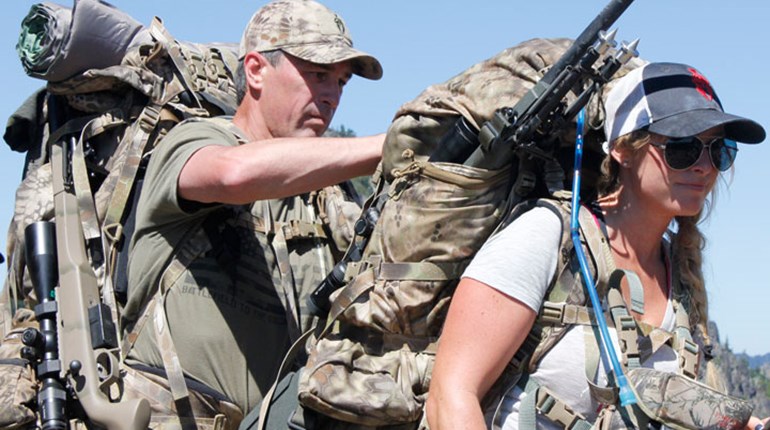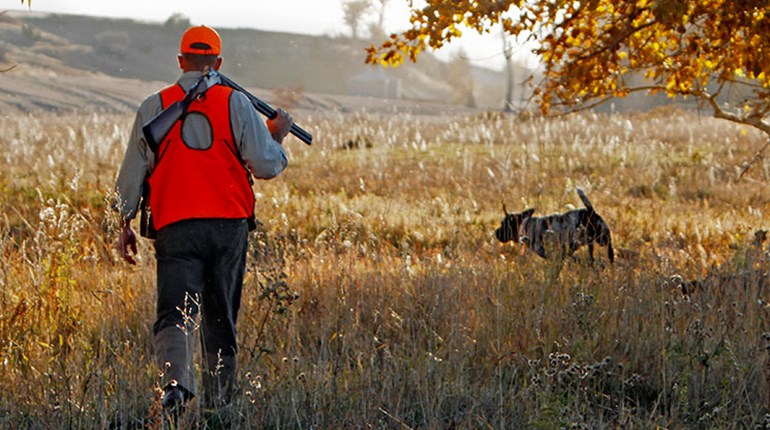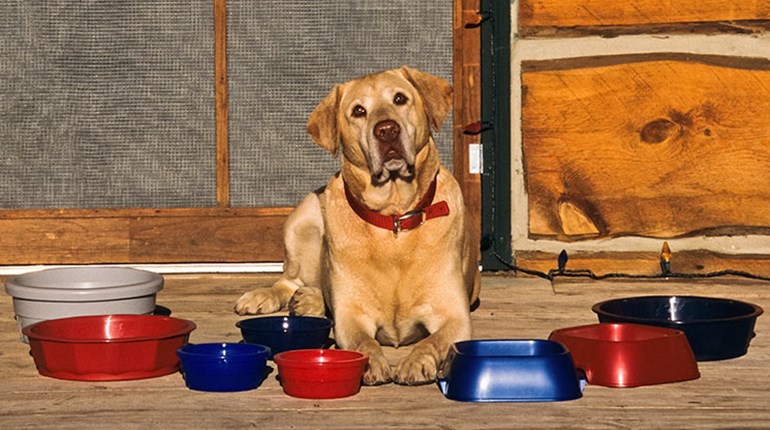Your destination hunting adventure includes your gundog. You’ll both have a great hunt if you use this advice to plan ahead.
Let’s say you’re planning to spend time and money on a grandiose upland or waterfowl hunt to South Dakota, Kansas or a similar bird-hunting paradise. Should you take your dog?
Don’t laugh. Some dog owners ponder this because they’re afraid Fearless might smell all those birds and run wild, never to be seen again. It happens.
Other folks worry Fearless might forget all his training, run wild and ruin the hunt for other people in the hunting party. And those going on guided hunts worry the outfitter won’t appreciate a strange dog, one that might fight the lodge dogs, mate them or otherwise foul up their work.
Then there are fears of rattlesnakes, cliffs, water hazards, cacti and other hidden dangers. A doggy road trip can be quite intimidating indeed. So what should you do?
Forget about it! You allow yourself to be a slave to your hunting dog—feeding, cleaning, training—because she’s a hunting dog. So if you have actually trained her to hunt, let her hunt! This is why she exists. Life is full of dangers and challenges. Guarding against them, on the other hand, is prudent. So start guarding. Here’s how.
Getting Lost
In this satellite, digital, electric age, are you kidding? Put an ID tag on Fearless’ collar with your cell number and a backup home number. Then strap a D.T. Systems Baritone Beeper Collar (dtsystems.com) on him and touch a button to hear where he’s hiding. Or use Garmin’s Astro 320 GPS collar (garmin.com), which tracks Dog via satellite. If you’re still nervous, clip a 30-foot lead to Fearless and hunt the first morning with him under full control until he’s finished lunging and racing through all that bird scent. Reinforce basic obedience commands. Then let him hunt while dragging the rope for an hour or so to make him easier to corral.
Life on the Road
Some hunters launch a long drive only to discover Fearless panics in the car, drools, pukes and eats the captain’s chair. What? You mean you haven’t acclimated your dog to car travel yet? That should begin the day you pick up the pup. Even if you have only a few days before the hunt, start getting Dog into Dodge mode. Put her food or treats in the back. Throw her fetching dummy inside. Drive down the block, then around town and eventually onto the highway. To protect the seats, keep her in a kennel box or travel crate in the back seat or securely strapped down in the back of a truck. Use common sense and gradually acclimate your canine partner to life on the road.
Hotel Accommodations
Worried about where to house Fearless on the road? My dogs’ favorite hotel is their kennel boxes inside the truck. It’s warm, safe and familiar. They love it. But you can call ahead to motels, campgrounds and lodges to see if they permit pets before you book. The Best Western Ramkoda in Pierre, S.D., for example, advertises itself as pet-friendly. Others are not. Plenty of hunters have smuggled dogs into motels, but this usually ends in disaster and a large bill. Many hunting lodges provide full kennel facilities with exercise pens, water and even bathing tubs.
Ringneck Ranch near Tipton, Kan., offers specific advice. Its website says dogs with current vaccinations are welcomed, as owners Keith and Debra “believe that anyone that takes the effort and expense of keeping a dog should be able to take them along on a good hunt.” However, they “expect that guest dogs be trained and under control … . Owners should be prepared to work with their dogs on using our kennel’s two-way dog doors.” Ringneck Ranch also cautions that guests who bring quail or field-trial dogs to hunt pheasant for the first time will often be disappointed when their far-ranging dog causes wild-running pheasants to consistently flush out of range. In essense, don’t take your dog to a hunting situation he’s never experienced; your expensive hunt isn’t the time for training. Obviously, it’s important to research any hotels or lodges and their dog policy before you hit the road.
Fear of Flying
This one scares even me, not because I think Dog can’t handle it, but because I fear the airlines can’t. Their rules are so complicated, confusing and ever changing that I’ve stopped even trying. But if you must fly, contact the airlines early, get their restrictions and regulations in writing and meet them to the letter. (Websites often differ from personnel on the phone or at airport terminal, so get both.) If they specify a shipping crate 10 feet by 72 inches by 42.57 inches made of pressed free-range coconut husks, that’s what you’d better bring. Delta Airlines, for example, has myriad flying restrictions including summer and winter embargo dates, and a traveling temperature range of no colder than minus 10 and no hotter than 85 at any time. Again, it’s imperative you check with the airline to see the fine print before showing up at the ticket counter with your dog champing at the bit. While most people who fly with pets don’t have any problems, airlines don’t make it easy to fly your dog, and it’s often expensive. Strongly consider driving to all hunts if possible. Or move to North Dakota.
Hazards
Snakes, porcupines and the land itself can be hazardous to dogs, especially if they are unaccustomed to them. Consider snake-proofing Dog locally if you’ll be hunting in a snaky area in warmer months. (South Texas and Arizona are good examples.) It’s simple. Put electrical stimulation collar on Dog (one she’s used to) then run her in the field where someone has planted a snake. Defanged rattler is best, but even a garter snake will work. When Dog sniffs, points or otherwise acknowledges snake and moves close, you zap her. While snakes are a real concern, it should be noted that in 40 years of running bird dogs in snake country, I’ve seen zero snake bites. But they can happen.
In some places like Idaho where cliffs plunge hundreds of feet, dogs should be introduced to such terrain on a lead until they understand they must proceed with caution.
Don’t let fear keep you or your four-legged partner from enjoying the best bird hunting of your lives. That’s why you’re here. Now hit the road running.

































